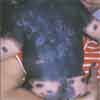Photoclinic: Giant Congenital Melanocytic Nevus
This 6-month-old boy was born with a pigmented hairy nevus that covered about 80% of his body surface. Multiple pigmented satellite lesions were also present.

This 6-month-old boy was born with a pigmented hairy nevus that covered about 80% of his body surface. Multiple pigmented satellite lesions were also present. Also known as bathing trunk or garment nevi, giant congenital melanocytic nevi represent a rare group of pigmentary lesions that cover a large portion of the skin. Lesions greater than 20 cm in diameter are arbitrarily classified as giant; they occur in about 1 in 20,000 live births.1 Giant congenital melanocytic nevi that involve the head and neck may be associated with leptomeningeal melanocytosis, which can be complicated by hydrocephalus, seizures, and malignant melanoma. Lesions on the back in the midline are associated with spina bifida, meningocele, lipoma, and neurofibromatosis.
In this child, radiographs of the spine and MRI scans of the head were normal, as were abdominal findings and results of ophthalmoscopy.
About 40% of malignant melanomas in children arise from giant congenital melanocytic nevi.1 Because of the significant risk of malignant transformation and the distressing cosmetic appearance of the lesions, prophylactic removal is warranted. Surgical treatment usually is undertaken at age 6 months and may involve serial excision with reconstruction, skin grafting, tissue expansion, and local rotation flaps. Chemical peels, dermabrasion, and laser treatments are adjunctive treatments. When surgical excision is not feasible or when the lesion is not fully excised (as in this patient), lifelong management consists of regular physical examinations and high-quality photographic monitoring. Cultured epidermal autographs have been used successfully in select patients.1 The melanocytes in these patients may extend deep into underlying tissues (including muscle, bone, and CNS); consequently, removal of the cutaneous component may not eliminate the risk of malignancy.
In most patients with giant congenital melanocytic nevi, melanoma never develops (despite the increased risk of malignancy). Therefore, the prognosis remains good for these patients, especially if the lesions are examined regularly for signs of atypia.
This child's nevus poses a great challenge to his health care providers. Treatment requires a team approach in which the pediatrician, dermatologist, neurologist, and plastic surgeon join efforts to provide the care and support both the family and the patient need.
References:
REFERENCE:
1.
Gomuwka PK. Skin, congenital hairy nevi. Emedicine.com. Available at:
http://www.emedicine.com/plastic/topic391.htm
. Accessed December 12, 2006.
Recognize & Refer: Hemangiomas in pediatrics
July 17th 2019Contemporary Pediatrics sits down exclusively with Sheila Fallon Friedlander, MD, a professor dermatology and pediatrics, to discuss the one key condition for which she believes community pediatricians should be especially aware-hemangiomas.